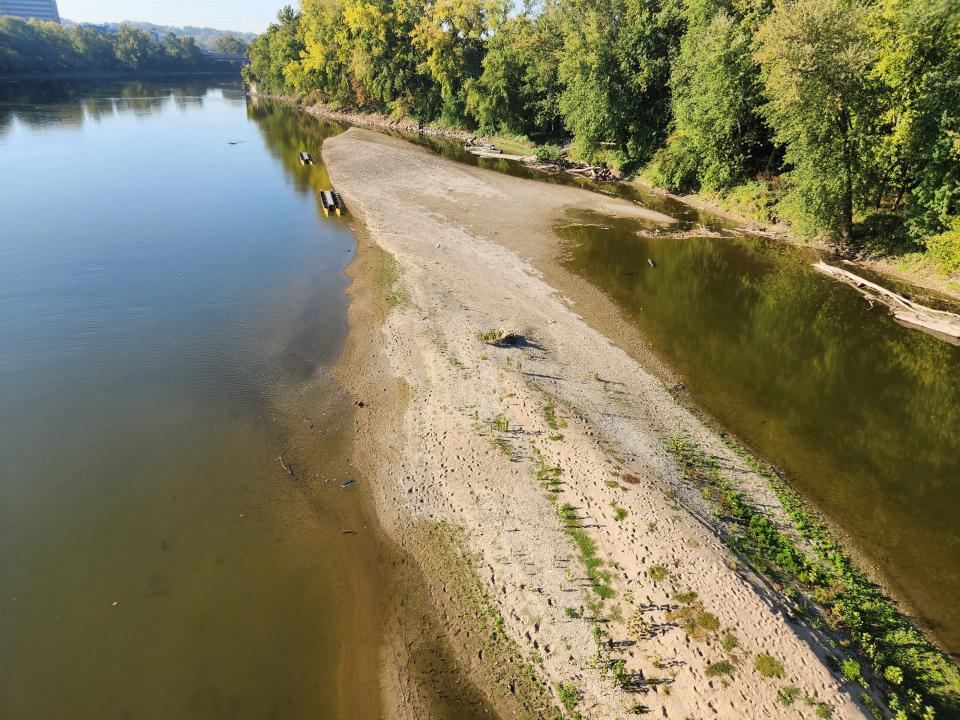Possibility of losing 100 million gallons of water a day prompts West Lafayette resolution
WEST LAFAYETTE, Ind. -- Local opposition to Indiana’s Economic Development Corp.'s LEAP project seems about as strong as some leaders' hopelessness that anything can be done to stop it.
The LEAP project would possibly pull up to 100 million gallons of water a day from Tippecanoe County and pipe it to Boone County in Indiana.
That didn't stop the West Lafayette City Council Monday from passing a resolution opposing the tapping of area resources to supply water to Lebanon, Ind., for the development of an economic district in Boone County some 40 miles away.
"Our passing of this resolution," said Council Member David Sanders, "doesn't stop the project. First thing is that, if no one expressed opposition, of course, it would go through, and there would be repercussions for the future."
The resolution against the Lebanon LEAP project -- which stands for Limitless Exploration Advanced Pace -- passed unanimously after a half dozen citizens also voiced their opposition to the possibility of losing millions of gallons of water for another Indiana community's benefit.
More: Negele, Deery commit to crafting legislation related to tapping of water resources
The state, the IEDC has explained, purchased land near the Wabash River aquifer with the hopes of extracting as much as 100 million gallons of water a day and piping it to Lebanon.
Lebanon, according to the IEDC, has the ideal location for a 9,000-acre for a “megasite” that could be a work site for 50,000 people working in advance manufacturing, mixed-use and corporate campuses.
Lebanon's water resources cannot supply 100 million gallons a day, a reality that brought the IEDC to Tippecanoe County.
"We're told that the project is of such-and-such of size," Sanders added, "if there is no opposition, no public discussion, no one is going to hold them to that size. I know that Mayor (Tony) Roswarski (of Lafayette) is very concerned about limiting the size of this pipeline, so, you know, it's for a dedicated use rather than just a free-flowing from the aquifer."
During discussion of the resolution, images of the Wabash River were projected on the council chamber's video screen. The photos, taken by Sanders on the morning of the Oct. 2 meeting, showed exposed dry areas of the Wabash River, not an issue, Sanders said, when water flow testing was conducted in June, "during the rainy season."

Roswarski previously pinpointed when he first became concerned about the scope of the LEAP project.
“We found out about this several several months ago, and had a quick meeting with the (Indiana Economic Development Corp.)," Roswarski said earlier this summer. “We originally heard about 10 million (gallons a day), but then we heard it could go up as high as 100 million (gallons a day). When that number came out, we got a little bit more concerned.”
Indiana state law dictates that the resources related to land belong to the owners of that land, so any water under the 9,000 acres would, by law, go to the purchaser.
“I want to make clear to folks that we understand that we don’t own the water," Roswarski told the Journal & Courier earlier. "The water in the aquifer, in Indiana law, if you own the land above, you have the right to tap the water. We understand that."
That reality didn't sit well with Cheryl Kirkpatrick, a West Lafayette resident who spoke Monday night during the public comment section of the city council meeting.
"I don't know anything about water," Kirkpatrick began, "this has nothing to do, that I'm going to talk about, about water. I have all these questions and not the answers for me. I want to know why Boone County got to sell 9,000 acres for $128 million. I want to know where did they get the $128 million to buy the land.
"Who owned the 9,000 acres? What was on the 9,000 acres? Why didn't the (IEDC) come to Tippecanoe County and buy 9,000 acres from us and we wouldn't have to build this 30-mile pipeline to Lebanon?"
Kirkpatrick said the project feels like a "done deal" when the IEDC has already spent millions of dollars purchasing acreage in Boone County.
"What would they do with the 9,000 acres if the deal falls through?" Kirkpatrick added.
Both Sanders and City Council President Peter Bunder noted that the "other side," representatives of the IEDC and the LEAP project, were not in attendance Monday to speak to the opposition or answer lingering questions.
"The other side doesn't come because they do not feel at all compelled to enter into this conversation because they've already had the conversation," Bunder said after the meeting adjourned. "We have our little oligarchies, everyone has theirs, so somewhere in Hamilton County four years ago made the brilliant idea that they would do this and they have done it.
"And so, it's like learning you aren't going to have a branch of (the Bureau of) Motor Vehicles anymore," Bunder cited as an example of the state making a decision without including local perspective, "and 'we're going to come up and tell you why you aren't going to have that branch anymore. So, we're not surprised."
The resolution to oppose the LEAP project, cosponsored by Sanders and Council Member James Blanco, was ultimately amended after another citizen, Jason Anderson, spoke during the public comment section asking that the council add the Teays River aquifer to the verbiage, which cited the Wabash River and its aquifer.
The Teays River, according to the Indiana Department of Conservation, enters Indiana in Jay County and runs northwest, crossing south of the Wabash River under Tippecanoe County.
This article originally appeared on Lafayette Journal & Courier: West Lafayette leaders pass resolution against tapping of county water

